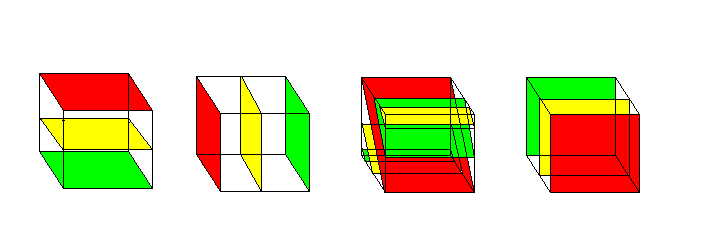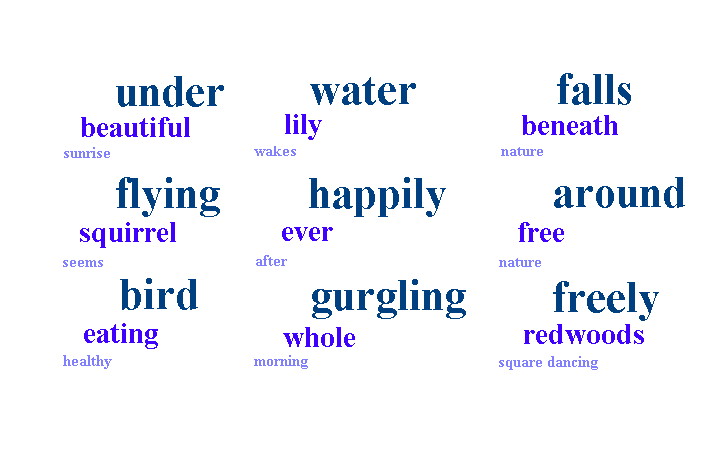
A book is a representation of spacetime. Each page is a slice of the book's time. The dimensions of its space are the length and width of each page. Normally one reads a book the way it's supposed to be read--as a series of pages. In doing this, one is slicing the spacetime of the book into pages. What if one decided to swap space and time? Instead of traditional pages, one could slice a book along a different axis and call those pages. With real books, this creates a mess. However, with the blossoming new art of Haikube, one can slice the book along any axis!
A Haikube is a set of 27 words arranged in a cube. The beauty of it is that a Haikube can be read in any direction--and the reader still gets Haiku poetry. Some possible slicings of the Haikube are shown below:

Figure 1: Possible Slicinigs of the Haikube
Of course, each drawing above represents more than one set of Haiku poems. Once it is decided what the pages are, the reader must decide which edge of the page is up-down and which edge of the page is left-right. Then the reader must decide whether to read the words left to right or right to left and up to down or down to up. This creates many nonsensical poems--but all Haiku!
An important feature of the Haikube is that it is a 3-torus. This means that the front is "glued" to the back, the top to the bottom, and the side to the side. What this means to the reader of the Haikube, is the following: If you pass out of one face of the cube, re-enter through the opposite face.
Unfortunately, the Haukube cannot be properly represented in 3-space. (Literature that is not embeddable in 3-space--I love that!) While any slice of the Haikube contains 3 lines (of 5, 7, and 5 syllables), the seven syllable line is not always in the middle in this representation. Therefore, the proper method of reading these poems is to pick a slice, find the 7 syllable line, move back one line, then read three consecutive lines.
Kinda makes Shakespeare look like a boring old fool, huh? Okay, maybe not; but here's a poor example of Haikube:

Figure 2: Haikube
Perhaps the great astronomers of
Einstein At The Bat were able to meet
by rotating the spacetime axis. Is they were all to walk through
(say) the North Pole at any point in history, they could then
switch the spacetime axes so that they would be seeing a planar
slice of the world through all of time. By walking through the
North Pole, they would guarantee that all of their slices would
be represented at any instant. Or maybe not.
Orientation in Space-Time
Visualization of Space-Time
Time Dilation